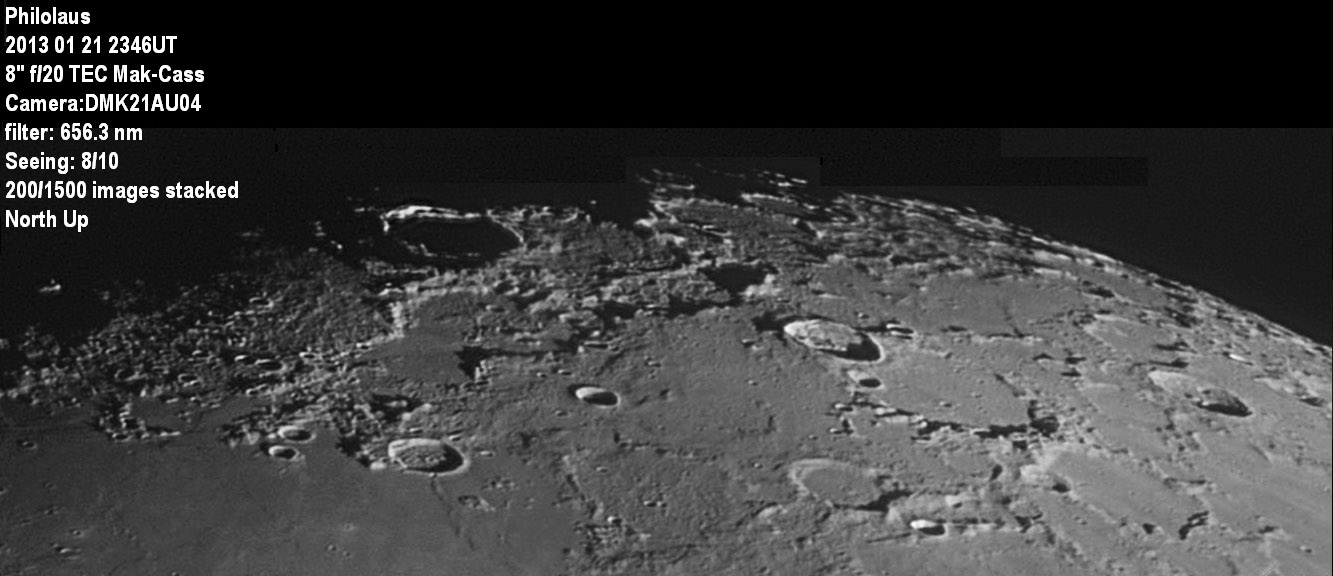Difference between revisions of "February 6, 2013"
| Line 22: | Line 22: | ||
<em>[http://lpod.wikispaces.com/21st+Century+Atlas+of+the+Moon 21st Century Atlas]</em> chart 19.<br /> | <em>[http://lpod.wikispaces.com/21st+Century+Atlas+of+the+Moon 21st Century Atlas]</em> chart 19.<br /> | ||
<br /> | <br /> | ||
| + | <p><b>Yesterday's LPOD:</b> [[February 5, 2013|Plumy Ash]] </p> | ||
| + | <p><b>Tomorrow's LPOD:</b> [[February 7, 2013|Albumen Moon]] </p> | ||
<hr /> | <hr /> | ||
Revision as of 12:41, 7 February 2015
Near Polar Rubble

image by Rik Hill, Loudon Observatory, Tucson, Arizona
This image is dominated by the shadow filled ring of Philolaus. I like the region just to the south from Fontenelle to Timaeus, particularly inside Birmingham.
I'm surprised this "crater" actually got a name of its own yet Philolaus B did not get its own name and is much more identifiable. But the hummocky terrain in
the bottom of Birmingham is more reminiscent of the kind of landform you'd see in the ejecta blanket of a larger crater. Is the ejecta from Plato? Also interest-
ing is the "wrinkle ridge" that runs south from the crater Fontenelle. The portion near Fontenelle seems to form one wall, and the southern wall of Birmingham
the other of an ancient crater now buried. This libration was fairly favorable for this region with the point of maximum libration just to the right of this image.
As a result, at the far right we can easily see Byrd, Peary and Nansen as well as the figure-8 pair of Challis and Main.
Rik Hill
Note from CAW: Birmingham's bumpy floor is probably Imbrium ejecta.
Technical Details
Registax6, and further processing done with IrfanView, GIMP and montage assembly with AutoStitch.
Related Links
Rükl plate 3
21st Century Atlas chart 19.
Yesterday's LPOD: Plumy Ash
Tomorrow's LPOD: Albumen Moon



